The extension mirrors the exact same search and quick launching functionality as the Tree Search plugin and requires the plugin to be installed into Obsidian.
Installing
Raycast Extension Unreleased
For now you need to build the extension from source, which is relatively easy:
git clone https://github.com/catacgc/obsidian-tree-search-raycast cd obsidian-tree-search-raycast npm install npm run dev
Configuring
The extension needs to be configured with the plugin socket path from the plugin settings

Invoking for the first time the extension in Raycast, will ask for the socket path to communicate with the plugin. Copy the socket path from Obsidian as instructed above.
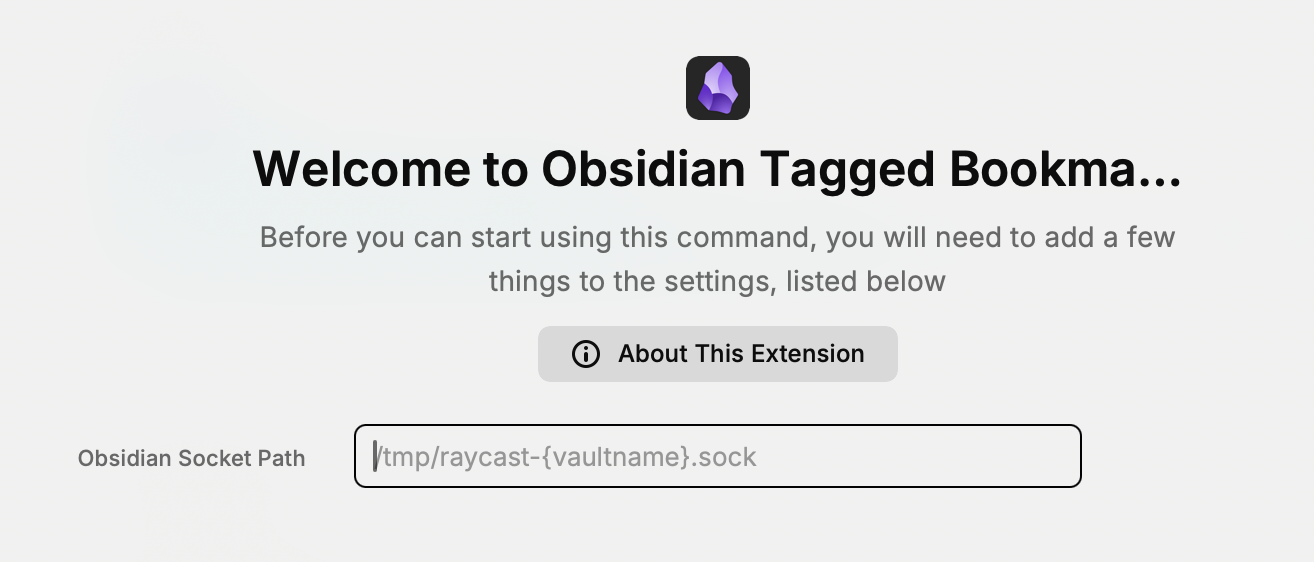
Using the extension
Take this sample file in my vault:
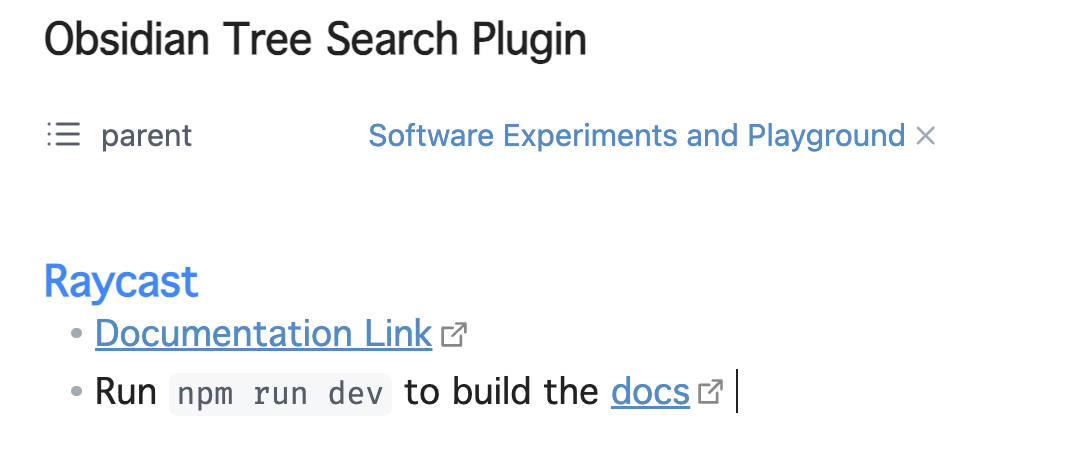
Invoking the following example search in Raycast (a node that contains “play” and has a children “raycast”):
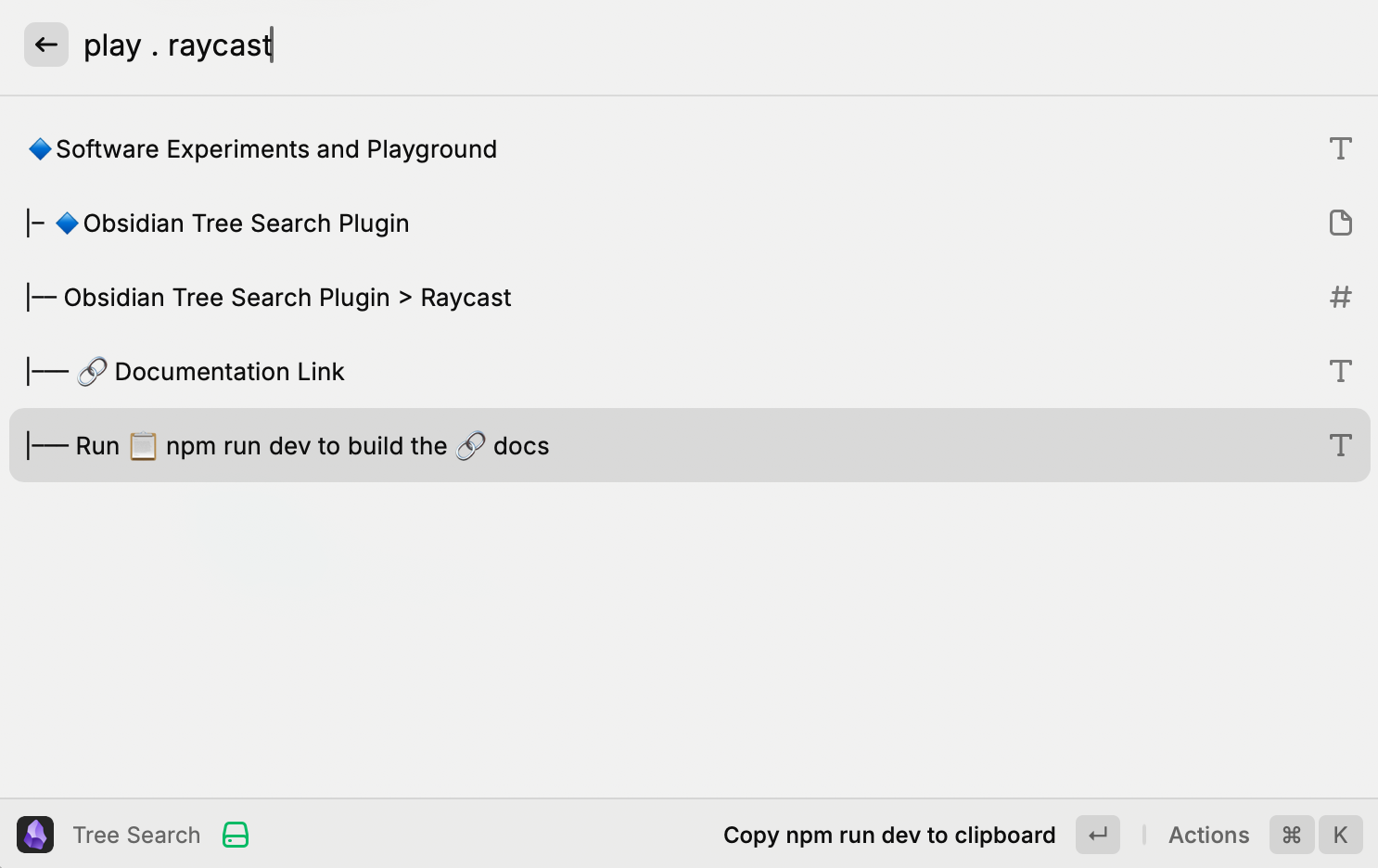
Invoking ⌘ + K opens up the command menu. The default one will be contextually selected from the indexed node contents. A few examples from the file above:
| Type | Screenshot |
|---|---|
| Obsidian Page - Open Referenced in that line | 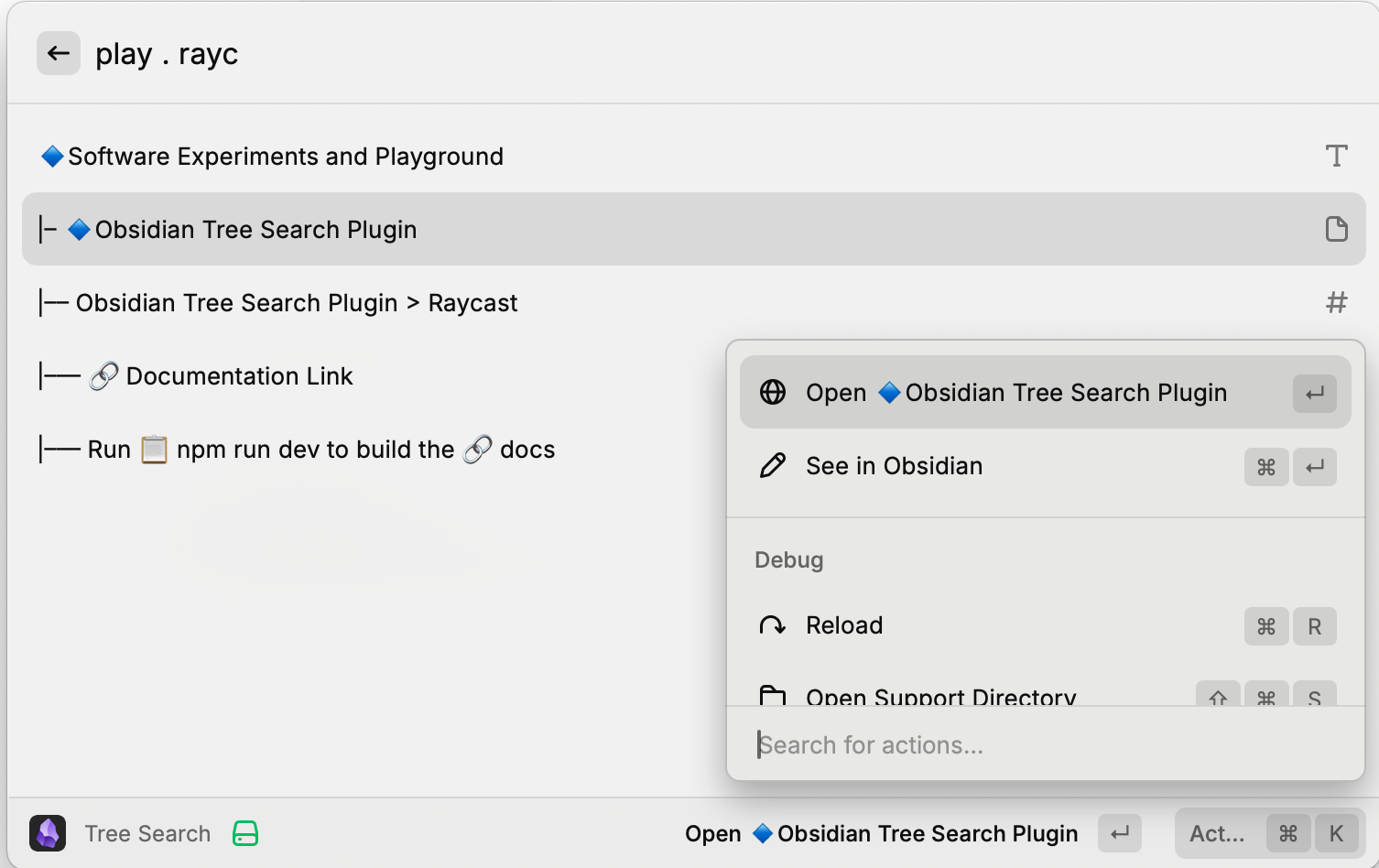 |
| Text Line or Headers - Open the line in Obsidian | 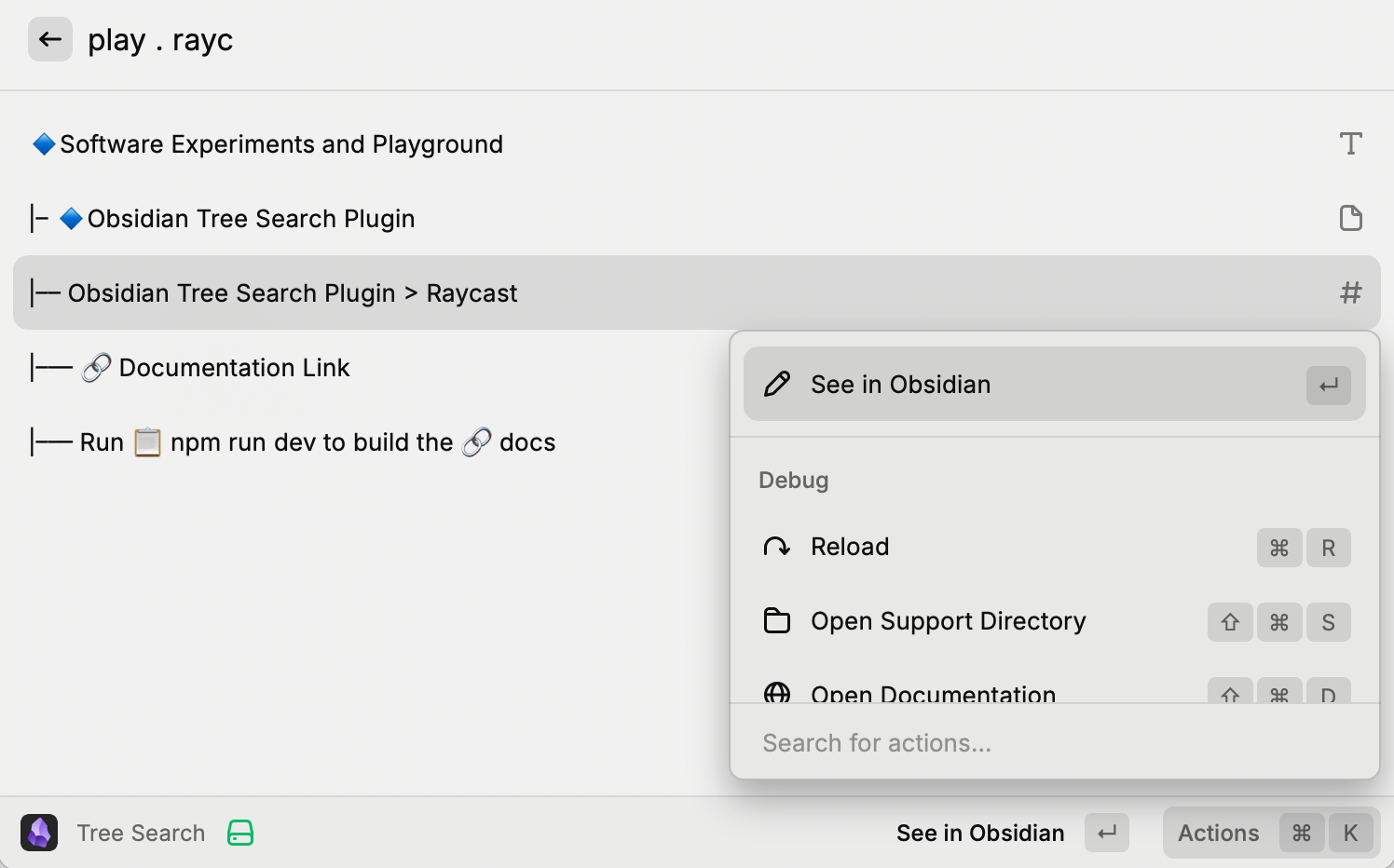 |
| URL - Open with default Browser | 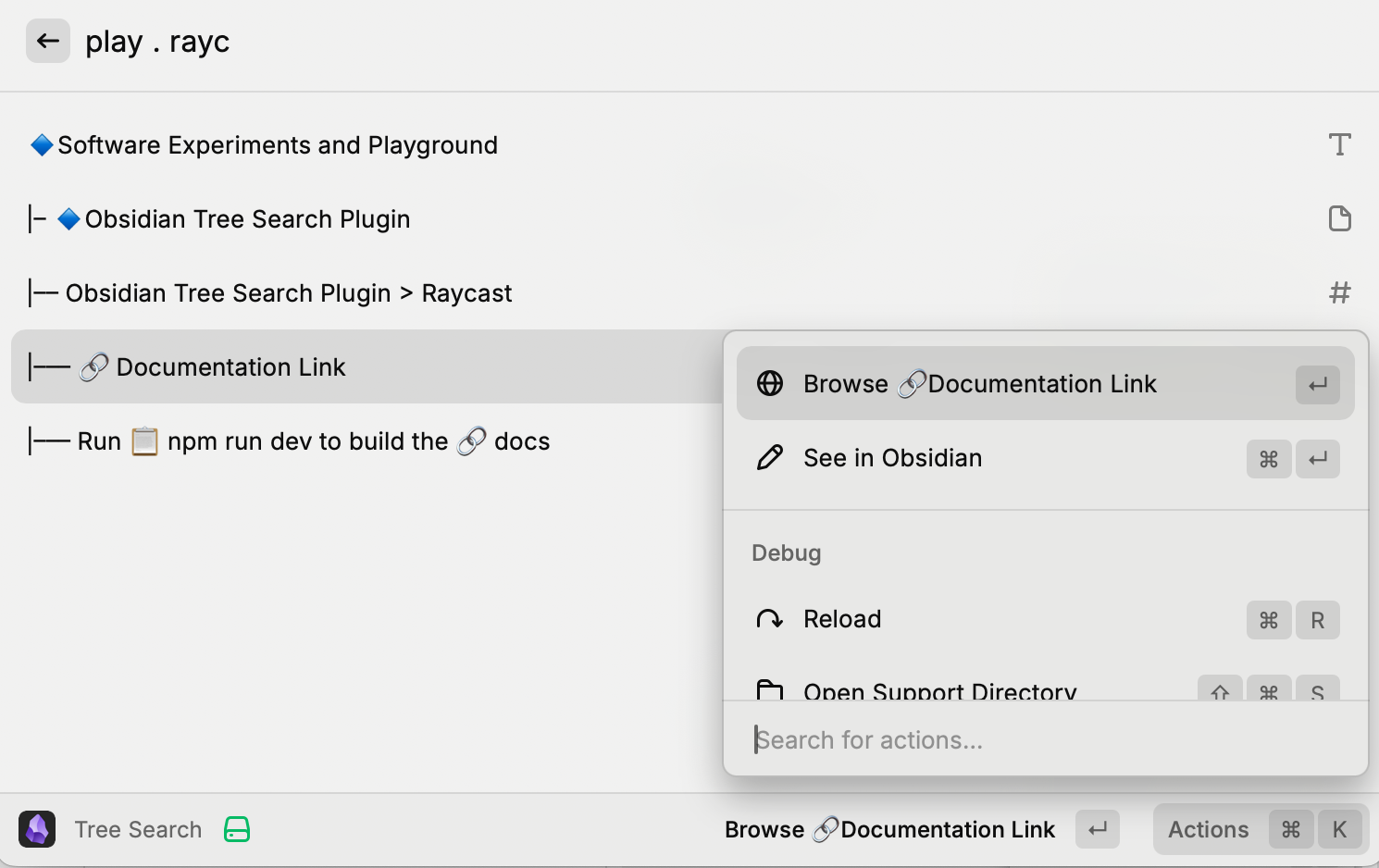 |
| Snippet - Copy Snippet | 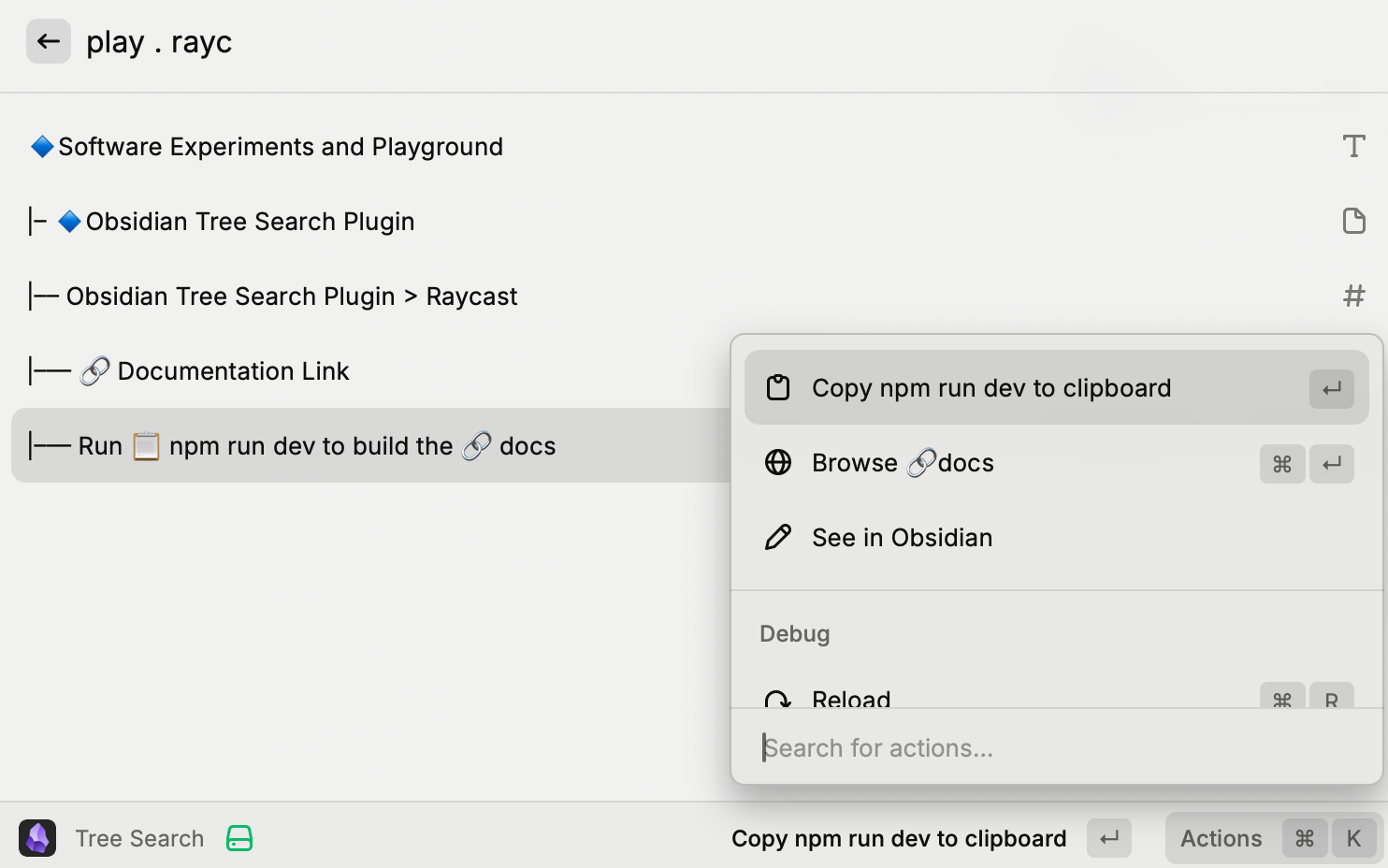 |
Multiple Elements
A single indexed line can have multiple elements: multiple vault pages, multiple links, multiple snippets. In that case, the extension will add multiple Quick Commands for each element. You can access the Quick Command menu using Cmd + K
For example, the following note:
- [[Raycast]]
- The [[Raycast Extension]] is a great way to use the [[Tree Search Plugin]]. Install it manually running `npm run dev`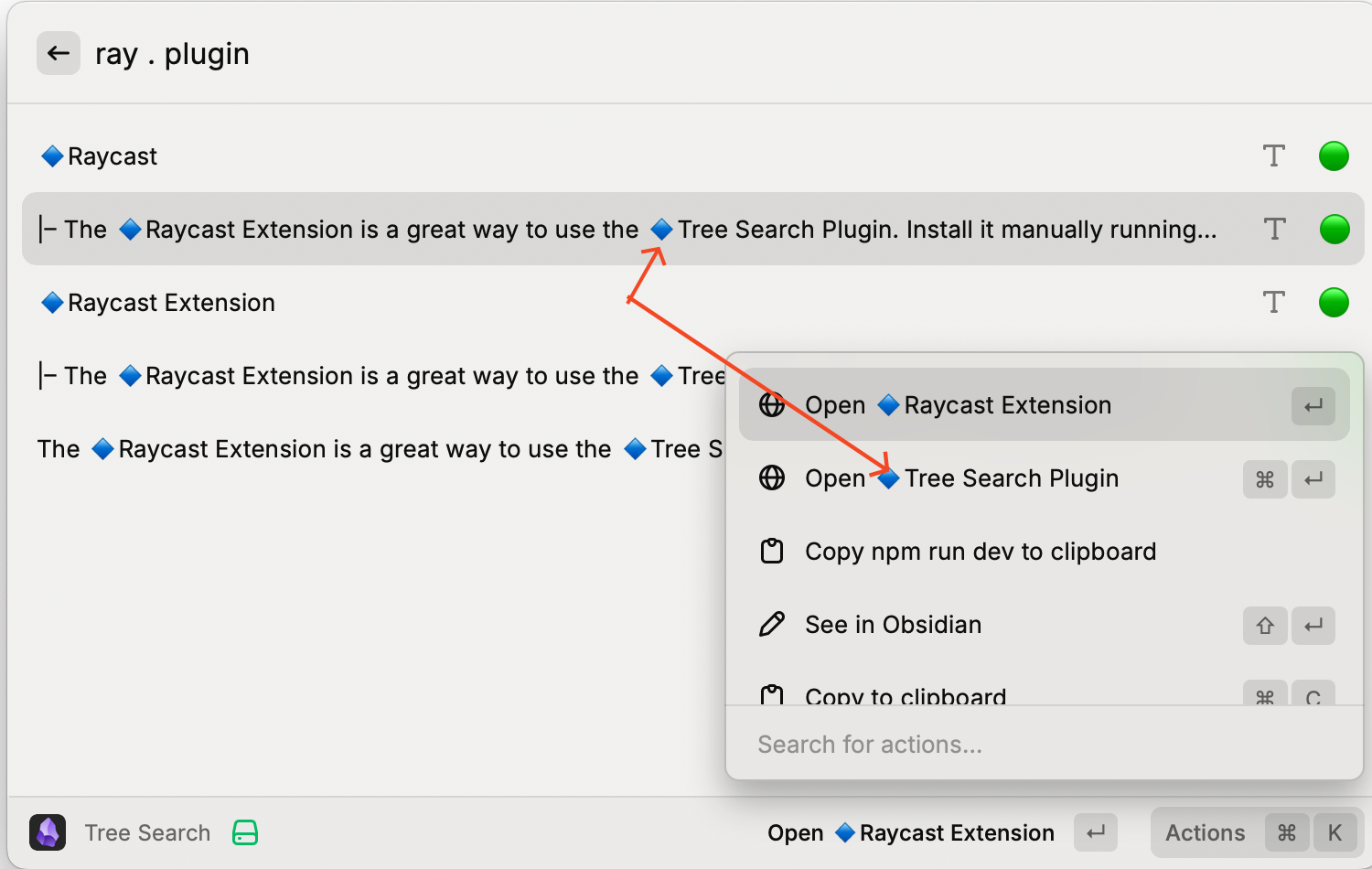
Default Shortcuts
For each results from the result, besides the dynamic actions above there are two default shortcuts:
- Cmd + C - copies the entire row
- Shift + Enter - open the line where that nodes was recorded in the vault
Multiple Vault Support
You can support multiple vaults by adding a comma separated list of vault sockets. Example: /tmp/raycast-Primary Vault.sock,/tmp/raycast-Secondary Vault.sock. Currently, the results are going to be show in the order of the vault socket paths. In this example, matches from the Primary Vault followed by results from the Secondary Vault
The vault results are going to be colored differently as shown below.
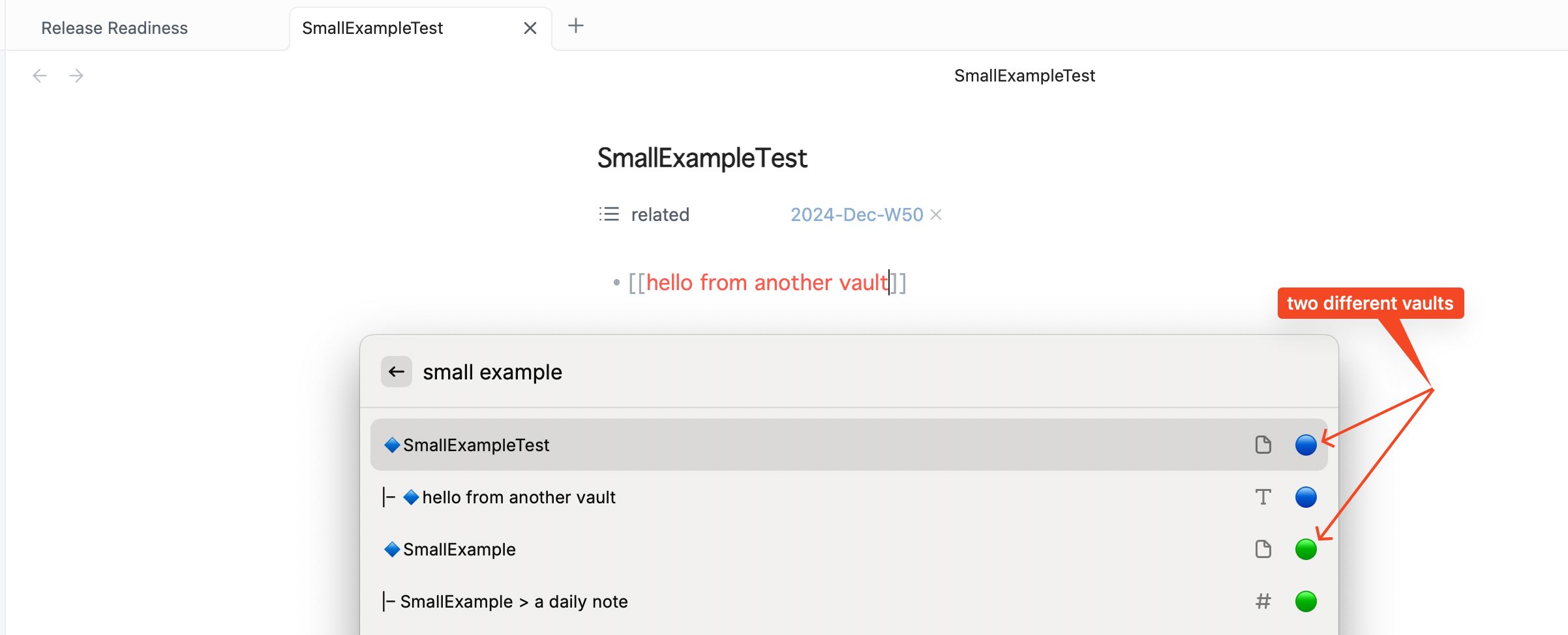
Building From Source
To build raycast from source:
- Clone the repo https://github.com/catacgc/obsidian-tree-search
cd raycastnpm installnpm run dev